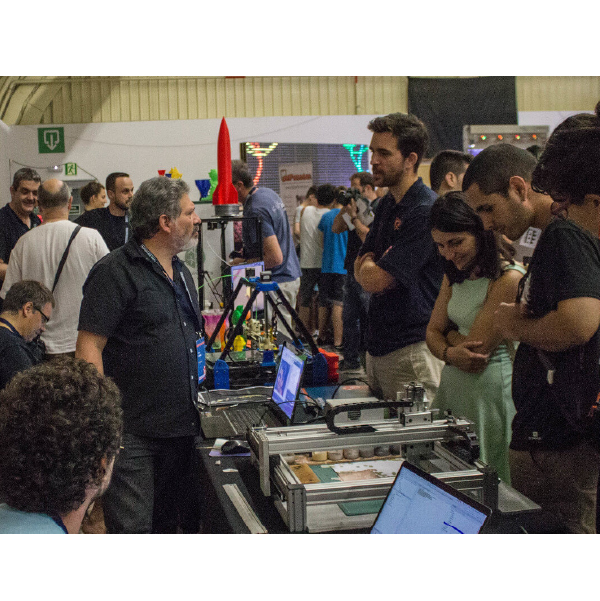Portrait Painter Robot Project
"Technology should bring more to our lives than the improved performance of tasks: it should add richness and enjoyment. A good way to bring fun and enjoyment to our lives is to trust in the skill of artists. Fortunately, there are many around." - Donald Norman
Maker Faire
Despite having heard about the Maker movement, I had never been so involved until I was at the Maker Faire Barcelona 2017. In this, it was the first fair where the Portrait Painter Robot Project, by José Salatino, was presented. The truth is that it was nice to see the reaction of the people and to see how they were surprised by a robot that painted portraits with a brush and paint.



Despite the fact that most of the projects at the event were related to 3D printing, there were other projects with very innovative ideas. Thanks to the visibility that the project had at this fair, the next stop was the Maker Faire Rome 2017. The Rome edition is the largest in Europe and it was a pleasure to be able to participate.
One week ago, the project was also presented at Maker Faire Lille 2018 (France) !!
If you want to know more about the project, you can check this post at Hackaday, Make magazine: Maker Faire Lille 2018, Make Magazine: Maker Faire Roma 2017, Make Magazine: "10 Projects from 10 Different Countries at Maker Faire Rome", Maker of Merit 2017, project presentation at FabCafé Barcelona and at this awesome artivle by David Cuartielles Robot Van Gogh will paint your portrait .
Thoughts
Before being at the Maker Faire in Barcelona, I had the opportunity to present my final degree project,Beat as One, at the Sónar+D marketlab. In this case, it was a research project and thanks to being able to exhibit it in a context such as the Sónar festival, we were able to obtain a lot of conclusions and thoughts on the expectations that viewers have regarding artistic projects that incorporate technology.
During the exhibition of the portrait painting robot project at the Maker Faire in Rome, I realized that many of the reactions coincided with the line of research that we are working on in the Beat as One project and I took the opportunity to write down some questions to reflect on and what I wanted share in this post.
I was taking notes of comments made by the people who visited the stand, and the ones that surprised me the most were: "So...what is it for? Isn't a real painter better than a machine?", "A machine that paints? Even painters will lose their jobs!"
Surprisingly, one of the conclusions we obtained from the Beat as One project is that viewers tend to have higher expectations of works of art or artistic installations that incorporate technology, above all because they expect technology to respond or personalized experience (comparing it to the gadgets that we use daily) forgetting that they are in front of a work of art.
In the case of the Portrait Painter project, it is true that it is a machine, that José Salatino (creator and painter) considers it as a "technique" or one more tool for his artistic work and does not believe that it replaces his work as a painter of portraits. Following this line, José wonders Who really is the artist? The machine or the creator of the machine?
Another aspect that caught my attention is that when people looked at the portraits created with the machine, they didn't get too much attention... Later they saw the machine and looked at the portraits again. At that moment they realized how they were created and they were surprised. At that moment I saw that the work of art itself did not attract as much attention as the artistic process (in this case it is the machine painting the portrait). On the other hand, most of the spectators did not consider the machine as a work of art... Why? Once again “technology prevails over art”. What could be done so that all the work done by the Portrait Painter is considered as an art installation or a work of art?
I found it interesting to document these thoughts, since my final degree project I try to know/learn/inform myself/observe everything that is related to art and technology. Despite having a technological career, what I like the most is seeing how creative and artistic processes can influence technological areas. As Donald Norman comments in his book Emotional Design.
